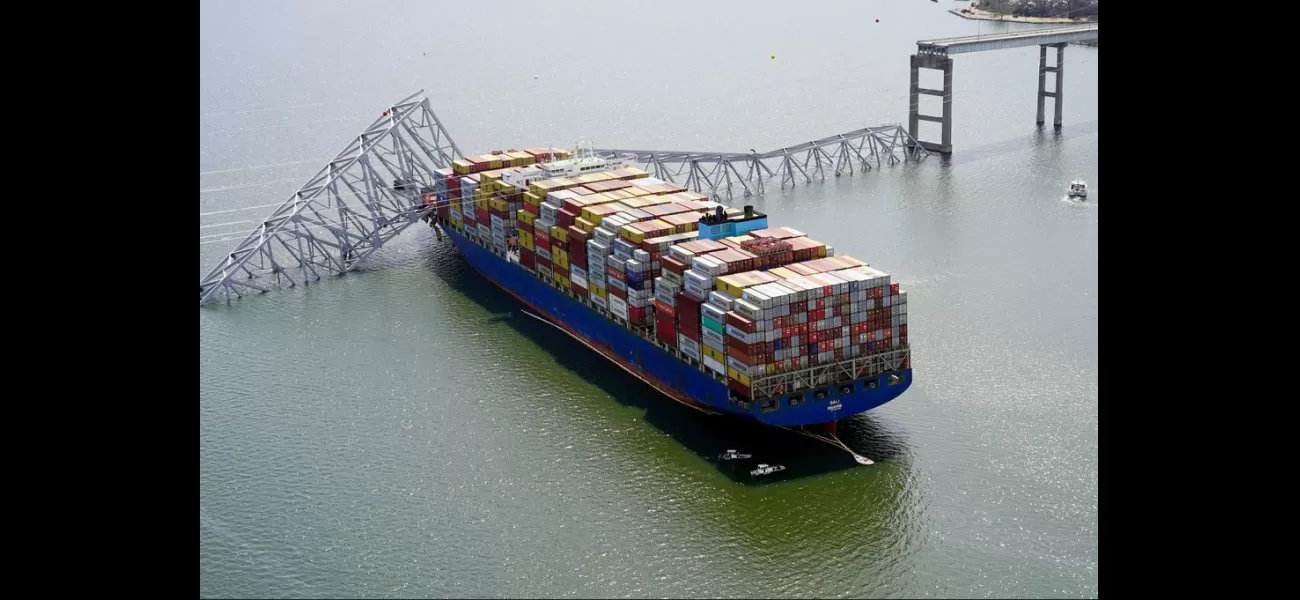Ship that caused collapse of Baltimore bridge had electrical outages
Investigators say that the Dali ship experienced an electrical blackout both before departing Baltimore and before crashing into the Francis Key Bridge, resulting in the deaths of six workers.
May 14th 2024.

The investigation into the tragic events surrounding the cargo ship Dali has revealed some new details. According to federal investigators, the ship experienced an electrical blackout approximately 10 hours before it was scheduled to depart from the Port of Baltimore. Unfortunately, this was not the only power outage the ship would face. Just before crashing into the Francis Key Bridge, the Dali faced another blackout, resulting in the deaths of six construction workers. The National Transportation Safety Board (NTSB) has released a preliminary report, providing the most detailed account of the tragedy thus far.
The report states that the initial power outage was caused by a crewmember accidentally closing an exhaust damper, causing the engine to stall. The backup generator was able to kick on, but it only ran for a short period before running out of fuel. This led to a second blackout, which occurred at the worst possible moment - when the ship was approaching the bridge. To make matters worse, the crew had to make changes to the ship's electrical configuration after the first blackout, switching to a different system that had been in use for several months.
However, the NTSB has not yet determined a direct connection between the earlier power issues and the final blackout that caused the bridge collapse. They are still investigating the ship's electrical configuration and its potential impact on the accident. The NTSB has stated that a full investigation could take up to a year to complete. During this time, they will also be testing the ship's fuel to rule out any concerns regarding its quality.
The safety board's investigation began immediately after the collapse, with investigators boarding the ship to collect evidence and interview the captain and crew members. According to board chair Jennifer Homendy, their mission is to determine the cause of the accident and prevent it from happening again. The preliminary report reveals that the Dali lost power at 1:25 am on March 26, about 800 meters from the bridge. The main propulsion diesel engine shut down, and the crew was able to restore power before calling for assistance from tug boats. However, a second blackout occurred, and a call was made to warn other waterborne traffic. Unfortunately, the ship struck a support pier on the bridge, leading to its collapse within seconds.
The Dali was on its way to Sri Lanka from Baltimore when the tragedy occurred. The ship issued a mayday alert, giving police just enough time to stop traffic on the bridge, but not enough to save the workers who were filling potholes. The last of the victims' bodies were recovered last week. In an effort to free the grounded ship, a controlled demolition was conducted on the largest remaining span of the bridge on Monday.
The preliminary report released by the NTSB is just a glimpse of the information that will be included in their final report, which is expected to take over a year to complete. The FBI has also launched a criminal investigation into the circumstances surrounding the collapse. Homendy has assured the public that the NTSB's investigation will cover all aspects of the crash, including the ship's power loss and any previous issues it may have experienced. They will also be looking into policies, training practices, and other factors that may have played a role. The design, engineering, and condition of the bridge will also be thoroughly examined. Homendy testified before a US Senate committee last month, stating that the investigation would focus on the ship's electrical system as a whole.
The report states that the initial power outage was caused by a crewmember accidentally closing an exhaust damper, causing the engine to stall. The backup generator was able to kick on, but it only ran for a short period before running out of fuel. This led to a second blackout, which occurred at the worst possible moment - when the ship was approaching the bridge. To make matters worse, the crew had to make changes to the ship's electrical configuration after the first blackout, switching to a different system that had been in use for several months.
However, the NTSB has not yet determined a direct connection between the earlier power issues and the final blackout that caused the bridge collapse. They are still investigating the ship's electrical configuration and its potential impact on the accident. The NTSB has stated that a full investigation could take up to a year to complete. During this time, they will also be testing the ship's fuel to rule out any concerns regarding its quality.
The safety board's investigation began immediately after the collapse, with investigators boarding the ship to collect evidence and interview the captain and crew members. According to board chair Jennifer Homendy, their mission is to determine the cause of the accident and prevent it from happening again. The preliminary report reveals that the Dali lost power at 1:25 am on March 26, about 800 meters from the bridge. The main propulsion diesel engine shut down, and the crew was able to restore power before calling for assistance from tug boats. However, a second blackout occurred, and a call was made to warn other waterborne traffic. Unfortunately, the ship struck a support pier on the bridge, leading to its collapse within seconds.
The Dali was on its way to Sri Lanka from Baltimore when the tragedy occurred. The ship issued a mayday alert, giving police just enough time to stop traffic on the bridge, but not enough to save the workers who were filling potholes. The last of the victims' bodies were recovered last week. In an effort to free the grounded ship, a controlled demolition was conducted on the largest remaining span of the bridge on Monday.
The preliminary report released by the NTSB is just a glimpse of the information that will be included in their final report, which is expected to take over a year to complete. The FBI has also launched a criminal investigation into the circumstances surrounding the collapse. Homendy has assured the public that the NTSB's investigation will cover all aspects of the crash, including the ship's power loss and any previous issues it may have experienced. They will also be looking into policies, training practices, and other factors that may have played a role. The design, engineering, and condition of the bridge will also be thoroughly examined. Homendy testified before a US Senate committee last month, stating that the investigation would focus on the ship's electrical system as a whole.
[This article has been trending online recently and has been generated with AI. Your feed is customized.]
[Generative AI is experimental.]
0
0
Submit Comment





